The Song of the Cid Read online
Page 2
Exile, as well as the opportunities for triumph and redemption that exile provides, is the poem’s principal concern, and that of its surprisingly tenderhearted warrior-hero. The Cid’s first stop on his way out of Castile is the monastery of San Pedro de Cardeña, some half-dozen miles to the southeast of Burgos. His wife, Jimena, and their two small daughters, Elvira and Sol, are already there, and as Rodrigo leaves them in the care of the abbot Don Sancho—for clearly the Cid cannot take them into the rough unknown that his political banishment forces him to face—we witness scenes of unembarrassed familial passion. We also hear the Cid’s profound concern not only for their immediate well-being, but just as much for what might seem, at first glance, to lie in a distant and peripheral future: his daughters’ eventual marriages.
The question of what will become of Elvira and Sol will turn out to be not distant at all but indeed quite central—the Warrior’s enduring concern, from this beginning until the final lines of the poem, which celebrate the extraordinary matches finally and triumphantly made. When we ride with the Cid out of Castile and down those roads he is forced to take, to build a new life for himself after he has been cast out, and his whole universe thus scattered, we grasp that the poem is preoccupied with the ways and means of re-establishing the order and justice in the universe that were lost when the Cid was exiled. Exiled unfairly, as a host of voices in the poem invariably remind us, our hero must display publicly, over and over again, his abundant good qualities in order to make things right. And while some of these good qualities are the virtues one would expect of a legendary warrior—utter fearlessness and great physical prowess—others are those that make him an appropriate hero for a society whose affairs are conducted largely off the battlefield: transparent honesty and dignity; belief that justice prevails; and exceptional generosity to all, including the king who has banished him. The Cid’s unflinching loyalty to Alfonso, despite the unfair exile, and his quest for justice, to reclaim his rightful place in society, are perhaps the most vivid and omnipresent strands in the poem, and tightly interwoven.
Once out of Castile, the Cid and his men begin their quest for a new life, which means they will attack and raid one town after another. This war-making is motivated neither by politics of any sort, religious or otherwise, nor by the desire to conquer the lands attacked and make them his own, at least until Valencia is reached in the second canto, some three years after his having been forced to flee from home. It is only then, when the Cid takes one of Spain’s greatest cities, Valencia la clara, “shining Valencia,” that he feels he has found a new home for his family. Up until then, the goal was far simpler: the accumulation of ever-greater wealth. Some of the material gains come directly off the battlefields, and we quickly learn the very great value of horses, as well as their saddles, and of tents and, of course, of the great swords of kings, two of which he will win in combat: the first, taken from the Christian Count of Barcelona, is named Colada, while Tizón is won from Búcar, the Muslim king of Morocco who first appears at the beginning of the third canto. A great deal of the gain also comes as coin, both silver and gold, the tribute that mimics the parias that defined relations between Christian and Muslim kingdoms, here paid outright to the Cid either because he has taken a place or, once his fame begins to precede him, to prevent him from attacking.
And his fame does begin to grow immediately, from his first raid (dangerously made inside Alfonso’s Castilian territories, as they are on their way out) onward, and with that renown, and with the wealth that increases with every raid and conquest, more and more men will flock to his side. Within a few years, the warrior we first glimpsed as he was leaving Burgos, weeping, with a handful of loyalists at his side, finds himself at the head of a real army, all volunteers, all happy to join what has become a profitable adventure. Our poem is always careful to have us understand that this juggernaut of success is rooted in the virtue of generosity, in the giving away much more than in the taking: The Cid is from the outset a veritable river to his men. Never, while he is traveling the roads that lead from the near despair of losing everything to the triumph of great wealth and possession of a major city, do we sense that our hero is craven, or bloodthirsty, or anything other than a man whose unjust exile is what has transformed him into this legendary warrior (“Castile’s great exile had become a serious danger”) and forced him to make such a life for himself and his men. In stanza 62, the Cid tells the vanquished Count of Barcelona that he will release him but not return any of the hoard he has taken from him “Because I need it for these men of mine, / Who have, like me, no other way to find it. / We stay alive by taking from others, as we have with you. / And this will be our life for as long as God desires, / Living as men must, when their king has thrown them into exile.” And a considerable part of the fortune won this way also serves the vital purpose of re-establishing the Cid’s standing with King Alfonso, to whom he begins to send always greater gifts from the bounty he takes with each battle, each victory.
The king, in turn, begins to see the worth of the warrior he has exiled, taking the measure of his utter fearlessness, which enables him to move easily from one conquest to the next, even when he and his men are seriously outnumbered. The monarch also sees the warrior’s worth in terms of the considerable wealth he amasses, a substantial part of which then becomes his own. Although he cannot pardon the Cid with undue haste, Alfonso appears to understand his error from early on—an error, it would appear, rooted in poor counsel, the corrupt advice of jealous nobles close to him. The king does almost immediately pardon those close to the Cid and, each time he receives his always greater gifts, encourages others to band with him: “Rejoin my Cid and seek more treasure.”
Predictably, however, our hero’s ability to transform the original desolation of his exile into a triumph of might and growing wealth, of great fame and near-universal admiration, of personal dignity and worth in the face of injustice and duress, provokes even greater envy and covetousness among some of those in King Alfonso’s court. And so it is that less than halfway through the poem its core dramas begin, when two young noblemen (who we can see in a minute are far from noble of character) persuade Alfonso to betroth them to the Cid’s daughters. The rest of this animated, fast-moving, and often surprising narrative poem plays out the story of these obviously ill-fated marriages to the nobles of Carrión, and the trials of every sort that follow from them.
Virtually all of the events of the dramatic dénouement are starkly literary: the opening scene of the third canto, when a lion escapes while the Cid is sleeping, and in an instant lays bare the cowardice of the sons-in-law; the heartbreaking beating of the Cid’s daughters, in a distant and dark woods, and the poignant sorrow of the father when he is told, revealing a warrior determined to seek social justice for the outrage, rather than the physical vengeance he could easily have had; the pageantry-filled court that Alfonso calls in Toledo, where every noble in the land is summoned to witness the charges and countercharges; and then the dramatic confrontation between the Cid and those among the nobility who have long sought to discredit and banish him, a show-down, we realize, that has been coming all along. The Cid, our Warrior, emerges the victor in all of these trials without once lifting his own sword.
The Cantar de Mio Cid has long enjoyed a seminal place in the Spanish consciousness of its notoriously complex medieval past and, thanks in some measure to the popular 1961 big-screen extravaganza El Cid—with international stars Charlton Heston and Sophia Loren in the leading roles—a certain place in the popular imagination beyond Spain, a kind of window into this unusual chapter in medieval European history. The text of the poem survives in a unique and incomplete manuscript that is a fourteenth-century copy of an earlier and lost one, probably from the early thirteenth century. Today considered one of the greatest treasures of the Biblioteca Nacional in Madrid, it was acquired only in 1960, after circulating for several hundred years among private collectors and interested scholars. Although the manuscript was discover
ed in 1596—in Vivar, appropriately enough, the legendary birthplace of the Cid—the existence of the work was not revealed to a broader public until the publication of a scholarly edition by Tomás Antonio Sánchez in 1779, an edition clearly a part of the universe of Romantic discovery and study of the medieval world. From that moment on, this narrative poem has remained indissolubly linked to very broad intellectual and scholarly disputes, and especially so to arguments, both direct and indirect, over the national origins and character of Spain, and about the qualities of its culture, arguments scarcely resolved to this day.
The peculiarities of the mutilated manuscript have, from the outset, seemed to invite persistent and divisive disputes: on one hand, the first folio—and with it probably some fifty verses—is missing; on the other, at the end of the nearly four thousand verses, there is explicit mention of someone called Per Abbat and the specific date—1207, once the calculation is made from the Hispanic to the Julian calendar—he tells us he recorded the poem in his manuscript: “Per Abbat le escrivió en el mes de mayo . . .” Most scholars agree that the Old Castilian escrivir here does not refer to authorship but rather indicates that Per Abbat copied the manuscript, and most also believe that this would be perfectly congruent with a great deal of what is known about the anonymity of many medieval texts and the vicissitudes of their translation from the universe of oral culture to that of the written word. All of this leaves wide open the question of authorship and, closely related, that of dating—problems not unique but in their general parameters shared by other famous premodern epics, not least the Iliad and the Odyssey. At the same time, the lacuna at the beginning of the poem—vital, among other reasons, because we tend to assume it would have told us more about the roots and causes of the Cid’s exile—provoked a far-reaching practice of filling in the poem’s story from other sources, as if the poem itself were merely a fragment of a larger story, rather than an autonomous artistic composition related to but distinguishable from the history that emerges from other sources.
Other sources do certainly abound. Long before the discovery and publication of this masterly poem, materials about the life of the Cid were plentiful, and some of these were roughly contemporary, going back to his own lifetime in the eleventh century, or the century or two immediately thereafter. These include purportedly historical as well as openly legendary and literary material, although unambiguous distinctions between the two are sometimes difficult to make, and not only when we are dealing with medieval material. Rodrigo Díaz was a charismatic and well-known figure in his lifetime, as attested to in fairly simple historical documents known as “diplomas” (or charters) that speak to his participation in events at various courts of the Castilian monarchy. Beyond these there are also two important Latin works, one a history, Historia Roderici (1140-47), and the other a historical poem, the Carmen Campidoctoris (The Song of the Warrior), which was long believed to be contemporary with the Cid’s life but is now thought to be from as much as a century later. Material about the Cid’s life proliferates in later histories composed at the court of the prolific scholar-king Alfonso X, from the mid-thirteenth century on, especially in the massive Estoria de España (History of Spain). These written histories themselves incorporate extensive popular and orally derived materials about the Cid, much of it clearly bound up with the vigorous ballad tradition, the Romancero , which overflowed with popular songs about the Cid, and was itself closely linked to a broader epic tradition that, with the exception of the Cantar de Mio Cid, has survived only in these indirect attestations. All of these often entangled sources further beg the question of history versus mythology, or literature, and of the relationship between the oral and the written at a period when the latter was beginning to supplant the former. But in all of this what remains indisputable is the great popularity of all manner of stories about this warrior, a popularity that has long transcended national preoccupations and reached as far as the theater of seventeenth-century Paris, where Corneille’s innovative 1636 Le Cid proved an immediate success.
In very broad terms, these intertwined problems constitute the principal and still starkly contested grounds of questioning and belief about this singular text: Who, if anyone, composed this masterpiece? Should we understand it not as authored in the modern sense but as part of the oral tradition, an oral tradition that in Spain especially has long been concerned with historical events, and long been believed to carry authentic historical information? Just what is the poem’s relationship to the history and historical characters it sings about, and what is the Cid’s relationship to the historical figure who actually lived and fought in late eleventh-century Spain? And what does any of it matter to a reader many centuries removed, whether that reader is a Spaniard or an American, a nineteenth-century gentleman or a twenty-first-century student?
In the early twentieth century the towering Spanish scholar Ramón Menéndez Pidal published two works—his edition of the Poema de Mio Cid, which came out between 1908 and 1911, and, in 1929, his monumental La España del Cid—that powerfully staked out the ground for one set of answers to these questions, and shaped the vision of the poem and its meaning for generations, even to this day. For Menéndez Pidal the Cantar—for this is what he invariably calls it (despite the use of the word poema in his title), with its strong connotation of being sung rather than written—is unambiguously the product of the oral tradition. An anonymous composition that closely reflects the historical events and milieu of Castile during its formative years, from which the poem, which he dates to circa 1140, is scarcely far removed, Menéndez Pidal’s Cid is a work of profound and direct historical veracity, revealing to us the Cid’s authentic private and civic persona. To make this argument his book begins with a long and impassioned rebuttal of the work of one of the legendary Arabists of the time, a distinguished and prolific specialist in the Hispano-Arabic world named Reinhardt Dozy, whose writings on the Cid were based on, among other things, Arabic documents dating back to the time of the Cid.
Several historical texts do exist in Arabic: A native of Valencia named Ibn ‘Alqama, who lived through the Cid’s capture of his city, wrote an account long lost in its original form but largely transcribed into a later historical work; another contemporary, Ibn Bassam, profiled notable Andalusians in an important biographical dictionary discovered by Dozy. But Dozy’s late-nineteenth-century debunking of the romanticized literary Cid threatened to undermine the Campeador’s already well-established hagiography, which made him a paragon of medieval Christian values; indeed, Dozy’s work even included the observation that the Cid had qualities far beyond his Arabic name that made him seem more Muslim than Catholic. Menéndez Pidal, however, unembarrassedly argued that our hero’s virtues—his loyalty to an unworthy king, which is really to the nation; his open devotion to his family; his generosity to all—needed to be remembered as foundationally Castilian, and thus Spanish, and to be emulated in the difficult present. That present, of course, was the stage-setting for Spain’s devastating civil war, and Menéndez Pidal’s views not only won the day among most scholars, and among the Spanish intelligentsia, but were also eventually appropriated explicitly by the Franco regime, despite the fact that Menéndez Pidal himself did not share the regime’s ideology. As the great historian of medieval Spain Peter Linehan points out, the painful questions about exile and loyalty that bitterly divided Spain’s intellectual classes after the triumph of the Nationalists strongly echo the questions at the heart of the poem, and many interpretations of the Cid, and of medieval Spain in general, are indissolubly tied to the dramatic events in Spain’s history in the twentieth century.
In 2007 even an innocent traveler to Spain might well have become aware that the year marked the eight hundredth anniversary of the Cantar de Mio Cid. The milestone was celebrated in ways both potentially meaningful—a rare public display, one evening, of the precious manuscript at the National Library—and overtly camp—a label, with charging knight and all, on bottles of the sparkling mineral wate
r called Vichy Catalan. And when the Prado, Madrid’s extraordinary art museum, opened its new wing to international acclaim, the commemorative exhibition of nineteenth-century history paintings in the new spaces revealed to visitors the once great popularity for painters of the scene of the Cid’s daughters, beaten and abandoned in the imaginary Corpes woods. Most remarkable, perhaps, and certainly most unplanned, was the scandal that erupted over the sword long displayed at the Military Museum as the Cid’s Tizón, which, along with his other sword, Colada, plays a prominent role in the events of the poem. The sword was sold for a considerable sum to the region of Castile-León, so that it might be displayed in the cathedral at Burgos, where the tombs of the Cid and of his wife, Jimena, are centerpieces of tourist interest. But the Ministry of Culture decided to have the authenticity of the sword scrutinized, and eventually announced that the sword could not possibly have belonged to the Cid, having been made in the fourteenth or fifteenth century. The anniversary display in the cathedral went on just the same.
Despite this kind of attention—or perhaps because of it—the poem is indeed, as Javier Marías noted, scarcely read in our own century, even by educated Spaniards, and almost never approached outside of loathsome required-reading school lists, nor without a series of largely negative preconceptions. In a post-Franco Spain, justifiably proud of its social and economic modernization and of its increasingly prominent role as one of the leaders of the European community, of an open and ethnically diverse society, it is perhaps not surprising that there is little real interest in this so-called national epic, assumed to be openly anti-Muslim and a glorification of a bigoted Christian worldview, a work held up for so long as emblematic of the Franco era’s repressive values. But these preconceptions are largely unjust and, at times, deeply ironic, given the centrality of the question of Christian-Muslim relations not just in Spain but also throughout the world in the twenty-first century.

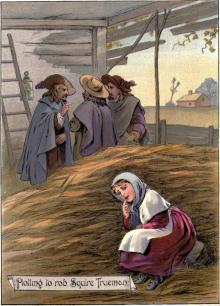 Goody Two-Shoes
Goody Two-Shoes The Pearl Box
The Pearl Box And when you gone...
And when you gone... Stranger At The Other Corner
Stranger At The Other Corner My Young Days
My Young Days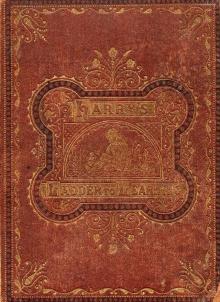 Harry's Ladder to Learning
Harry's Ladder to Learning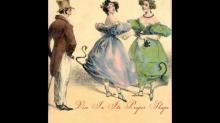 Vice in its Proper Shape
Vice in its Proper Shape_preview.jpg) Promise (the curse)
Promise (the curse) The First Sexton Blake
The First Sexton Blake Golden Moments
Golden Moments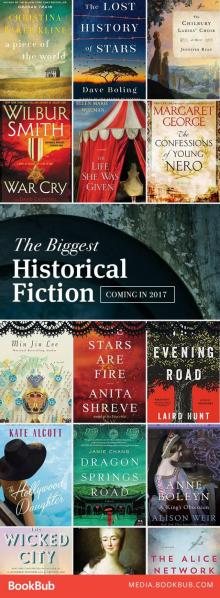 Hildebrand; or, The Days of Queen Elizabeth, An Historic Romance, Vol. 2 of 3
Hildebrand; or, The Days of Queen Elizabeth, An Historic Romance, Vol. 2 of 3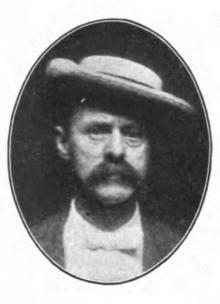 The Ice Queen
The Ice Queen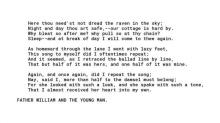 Phebe, the Blackberry Girl
Phebe, the Blackberry Girl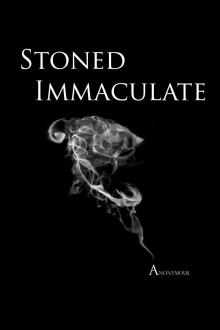 Stoned Immaculate
Stoned Immaculate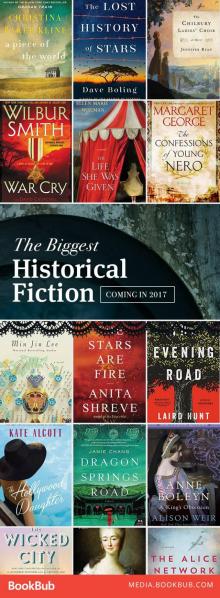 Hildebrand; or, The Days of Queen Elizabeth, An Historic Romance, Vol. 3 of 3
Hildebrand; or, The Days of Queen Elizabeth, An Historic Romance, Vol. 3 of 3 The Wonder of War on Land
The Wonder of War on Land Breaking Bailey
Breaking Bailey The Little Girl Who Was Taught by Experience
The Little Girl Who Was Taught by Experience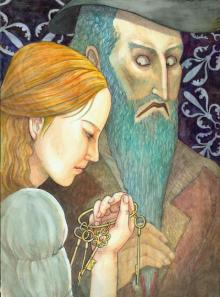 The Popular Story of Blue Beard
The Popular Story of Blue Beard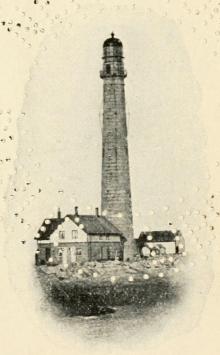 The Life Savers: A story of the United States life-saving service
The Life Savers: A story of the United States life-saving service Eunuchs and Nymphomaniacs
Eunuchs and Nymphomaniacs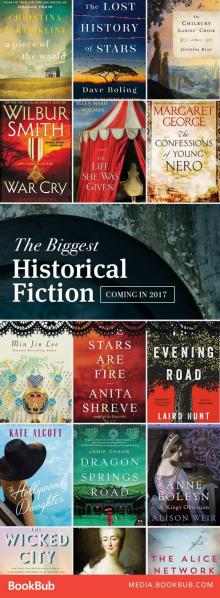 Hildebrand; or, The Days of Queen Elizabeth, An Historic Romance, Vol. 1 of 3
Hildebrand; or, The Days of Queen Elizabeth, An Historic Romance, Vol. 1 of 3 Kitty's Picnic, and Other Stories
Kitty's Picnic, and Other Stories Two Yellow-Birds
Two Yellow-Birds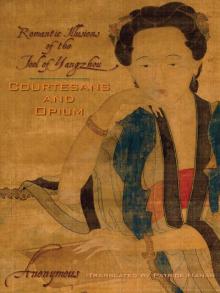 Courtesans and Opium
Courtesans and Opium The Emigrant's Lost Son; or, Life Alone in the Forest
The Emigrant's Lost Son; or, Life Alone in the Forest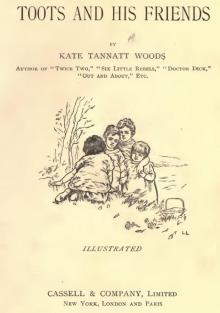 Toots and His Friends
Toots and His Friends Fast Nine; or, A Challenge from Fairfield
Fast Nine; or, A Challenge from Fairfield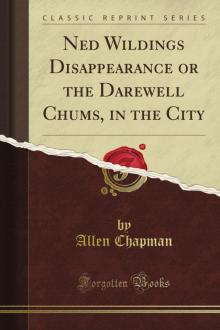 Ned Wilding's Disappearance; or, The Darewell Chums in the City
Ned Wilding's Disappearance; or, The Darewell Chums in the City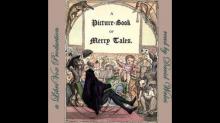 A Picture-book of Merry Tales
A Picture-book of Merry Tales The Trail of The Badger: A Story of the Colorado Border Thirty Years Ago
The Trail of The Badger: A Story of the Colorado Border Thirty Years Ago Peter Parley's Visit to London, During the Coronation of Queen Victoria
Peter Parley's Visit to London, During the Coronation of Queen Victoria The Rainbow, After the Thunder-Storm
The Rainbow, After the Thunder-Storm Arthur Hamilton, and His Dog
Arthur Hamilton, and His Dog The Story of the White-Rock Cove
The Story of the White-Rock Cove Grushenka. Three Times a Woman
Grushenka. Three Times a Woman Adventures of a Squirrel, Supposed to be Related by Himself
Adventures of a Squirrel, Supposed to be Related by Himself Falling in Love...Again
Falling in Love...Again The Colossal Camera Calamity
The Colossal Camera Calamity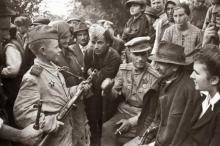 Child of the Regiment
Child of the Regiment Elimination Night
Elimination Night The Kingfisher Secret
The Kingfisher Secret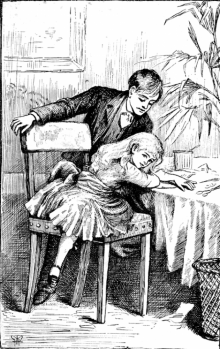 Left to Ourselves; or, John Headley's Promise.
Left to Ourselves; or, John Headley's Promise. The Island of Gold: A Sailor's Yarn
The Island of Gold: A Sailor's Yarn Adventures of Bobby Orde
Adventures of Bobby Orde Twain, Mark: Selected Obituaries
Twain, Mark: Selected Obituaries When Love Goes Bad
When Love Goes Bad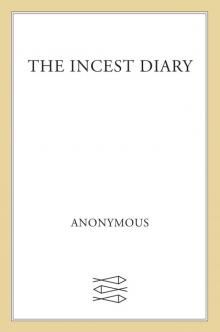 The Incest Diary
The Incest Diary Calling Maggie May
Calling Maggie May The Infidelity Diaries
The Infidelity Diaries Diary of an Oxygen Thief (The Oxygen Thief Diaries)
Diary of an Oxygen Thief (The Oxygen Thief Diaries) ARABELLA
ARABELLA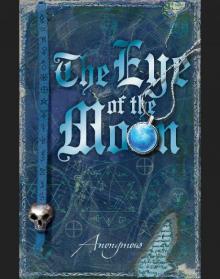 The Eye of the Moon
The Eye of the Moon Dara
Dara THE ALTAR OF VENUS: The Making of a Victorian Rake
THE ALTAR OF VENUS: The Making of a Victorian Rake The Book of Death
The Book of Death The Book of David
The Book of David The Devil's Graveyard
The Devil's Graveyard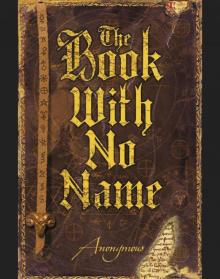 The Book With No Name
The Book With No Name I Am A Lesbian
I Am A Lesbian Njal's Saga
Njal's Saga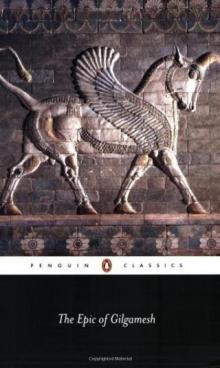 The Epic of Gilgamesh
The Epic of Gilgamesh Darling
Darling Tal, a conversation with an alien
Tal, a conversation with an alien Go Ask Alice
Go Ask Alice Aphrodizzia
Aphrodizzia The Campus Trilogy
The Campus Trilogy Augustus and Lady Maude
Augustus and Lady Maude Lucy in the Sky
Lucy in the Sky Sight Unseen
Sight Unseen Pleasures and Follies
Pleasures and Follies The Red Mohawk
The Red Mohawk A Fucked Up Life in Books
A Fucked Up Life in Books Chameleon On a Kaleidoscope (The Oxygen Thief Diaries)
Chameleon On a Kaleidoscope (The Oxygen Thief Diaries)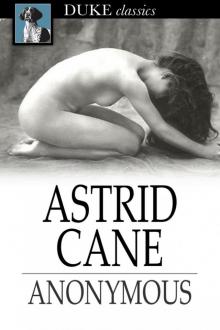 Astrid Cane
Astrid Cane BEATRICE
BEATRICE The Song of the Cid
The Song of the Cid